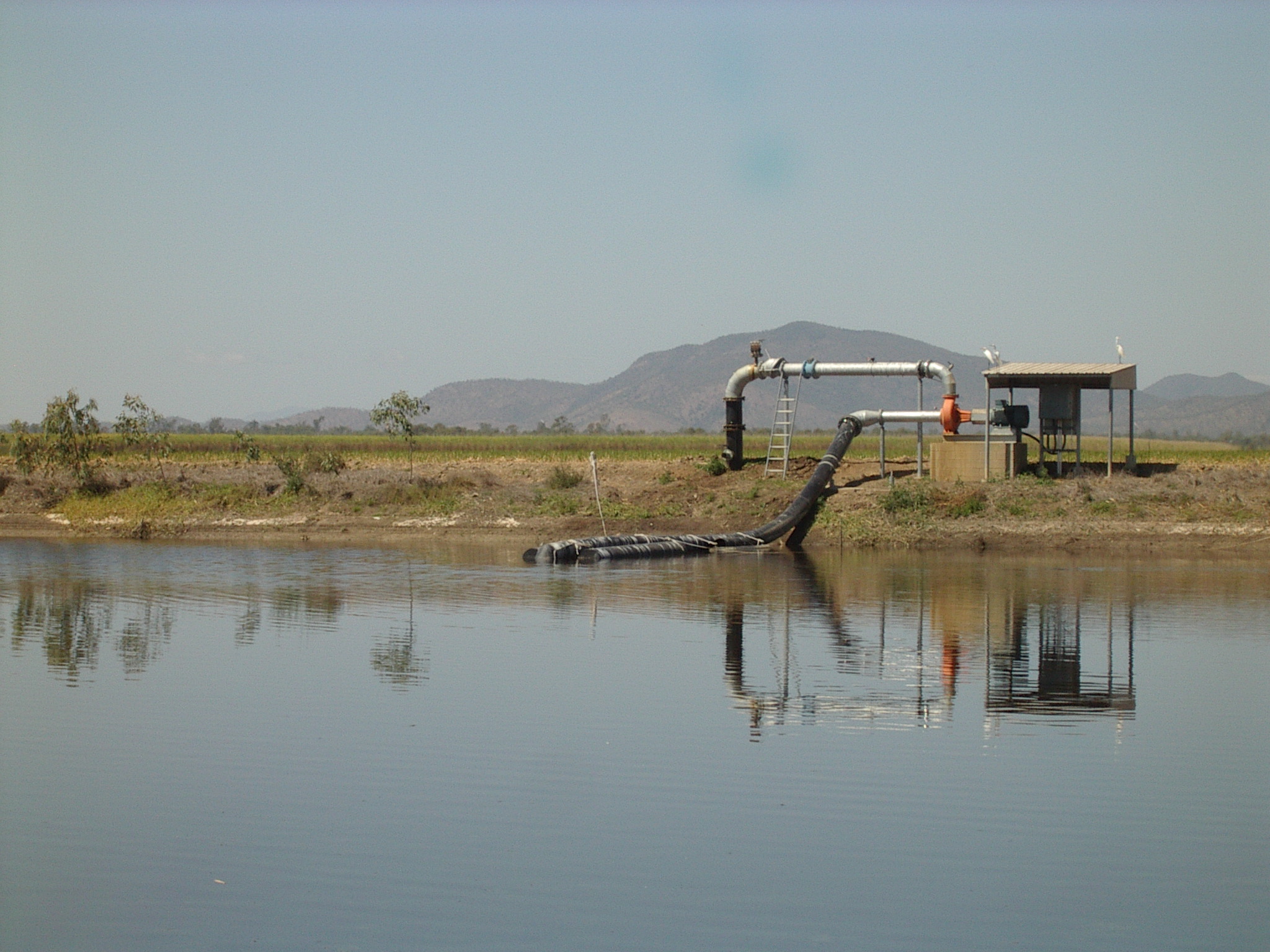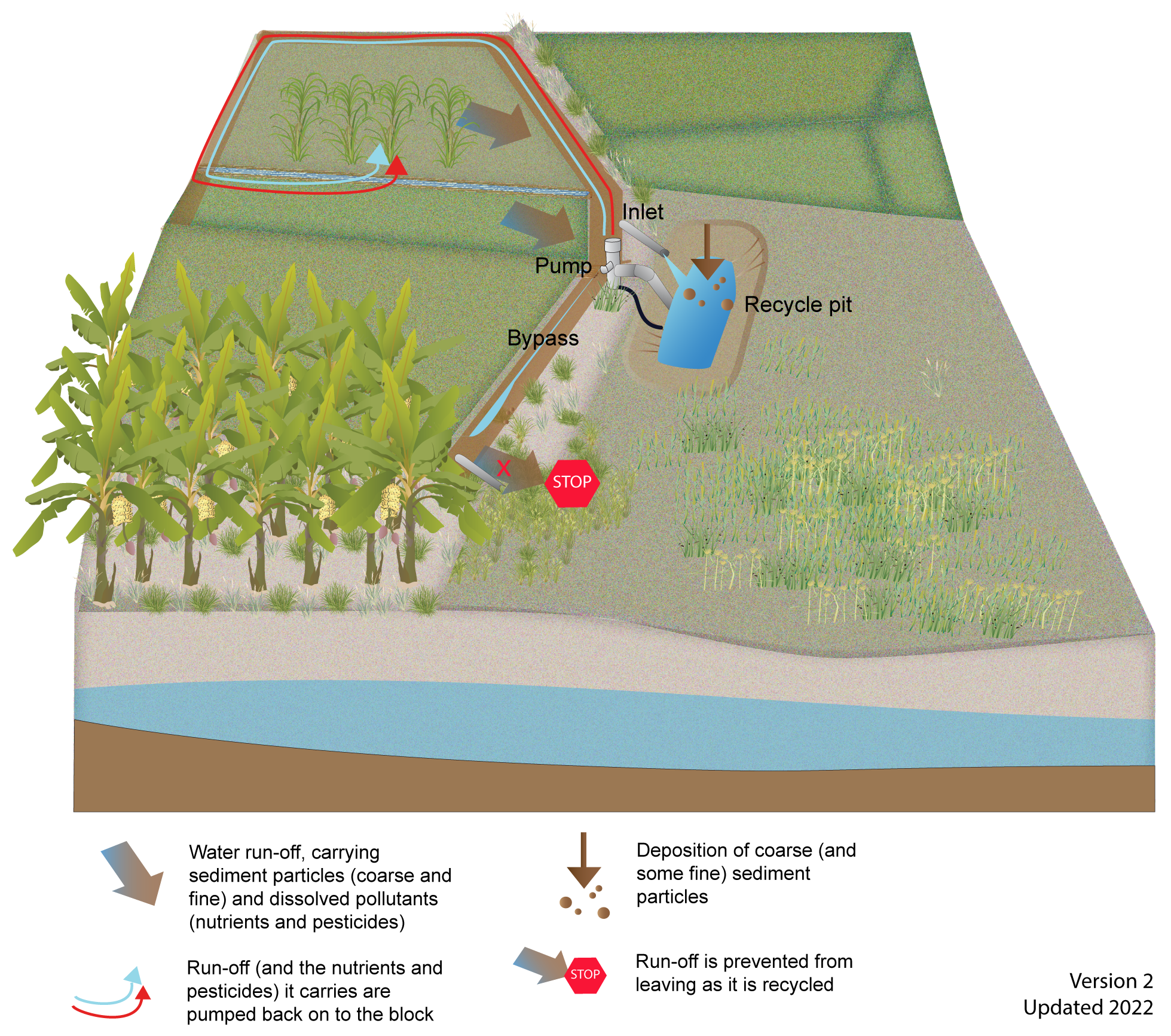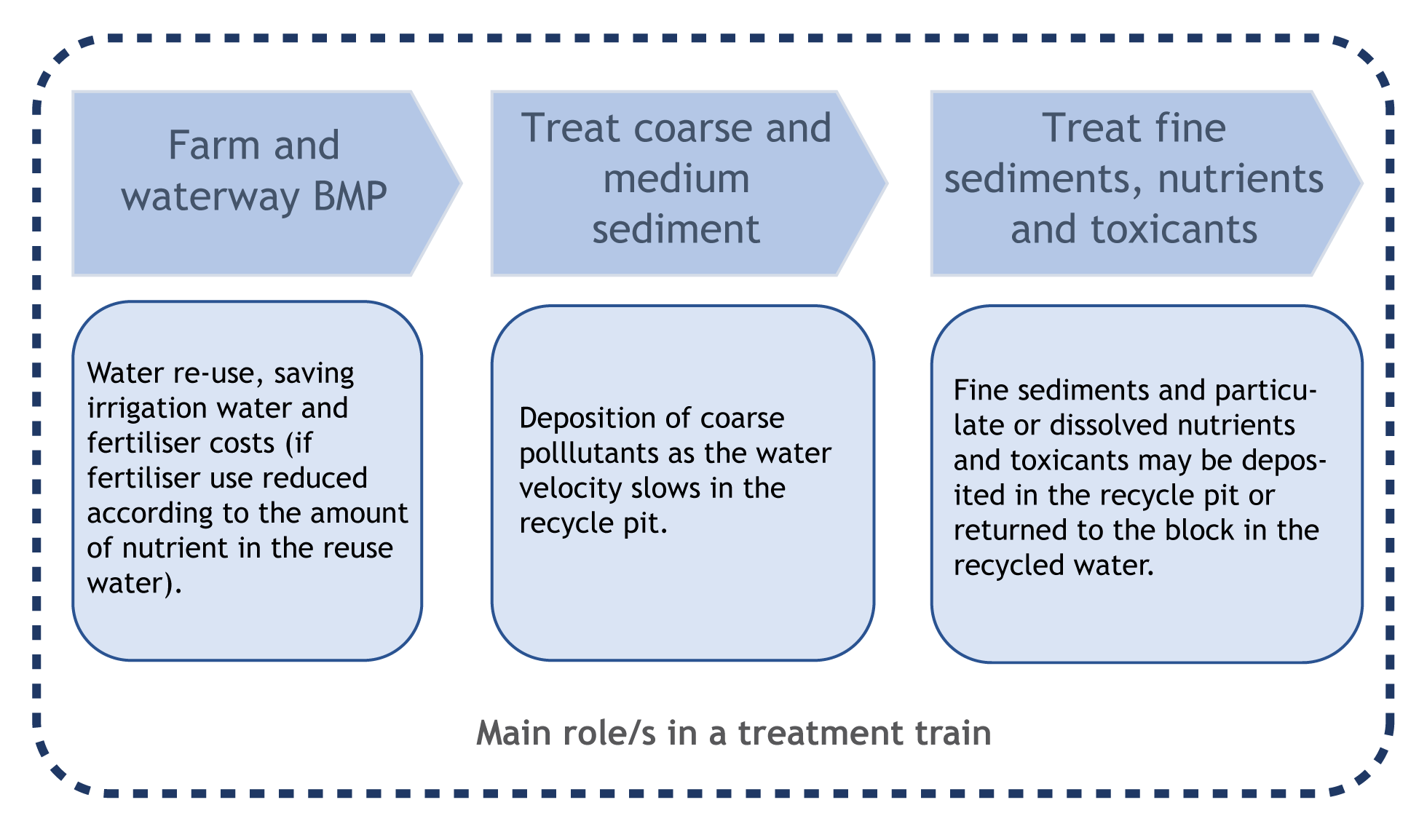|
|
Recycle pitsRecycle pits — Key ConsiderationsSelect from the tabs below  What makes a good recycle pit?
Treatment processes
Suitability and limitationsRecycle pits are generally used in areas where surface furrow irrigation results in tailwater run-off. This is primarily in irrigated sugarcane and broadacre cotton and grain crops[3][2] in the Burdekin, Fitzroy and Burnett Mary regions. Recycle pits are also used, although are not as widespread, in other regions such as the Mackay Whitsundays. Approximately 15-20% of the irrigation water applied to sugarcane is lost as run-off[4]. By capturing and reusing this run-off, recycle pits have the potential to significantly reduce the losses of sediments, nutrients and pesticides to downstream waterways. They need to be operated correctly in order to improve water quality. That is, to ensure water is rapidly re-used on the farm and sufficient capacity is maintained in the recycle pit to capture all irrigation tailwater, without overflowing to downstream waterways[1]. Recycle pits can be a cost-effective way to improve water quality and ensure water security. An economic assessment of recycle pits in the lower Burdekin suggests that the combined savings in irrigation water and fertiliser, would allow the farm to recoup the construction costs of recycle pits within four years[5]. The actual cost-effectiveness of recycle pit will vary for each individual site. The cost-effectiveness needs to be considered relative to other treatment systems or management intervention options. Refer to cost considerations for more information. DisclaimerIn addition to the standard disclaimer located at the bottom of the page, please note the content presented is based on published knowledge of treatment systems. Many of the treatment systems described have not been trialled in different regions or land uses in Queensland. The information will be updated as new trials are conducted and monitored. If you have any additional information on treatment systems or suggestions for additional technologies please contact us using the feedback link at the bottom of this page. References
Last updated: 10 June 2022 This page should be cited as: Department of Environment, Science and Innovation, Queensland (2022) Recycle pits — Key Considerations, WetlandInfo website, accessed 8 May 2025. Available at: https://wetlandinfo.des.qld.gov.au/wetlands/management/treatment-systems/for-agriculture/treatment-sys-nav-page/recycle-pits/design-summary.html |

 — Department of the Environment, Tourism, Science and Innovation
— Department of the Environment, Tourism, Science and Innovation



